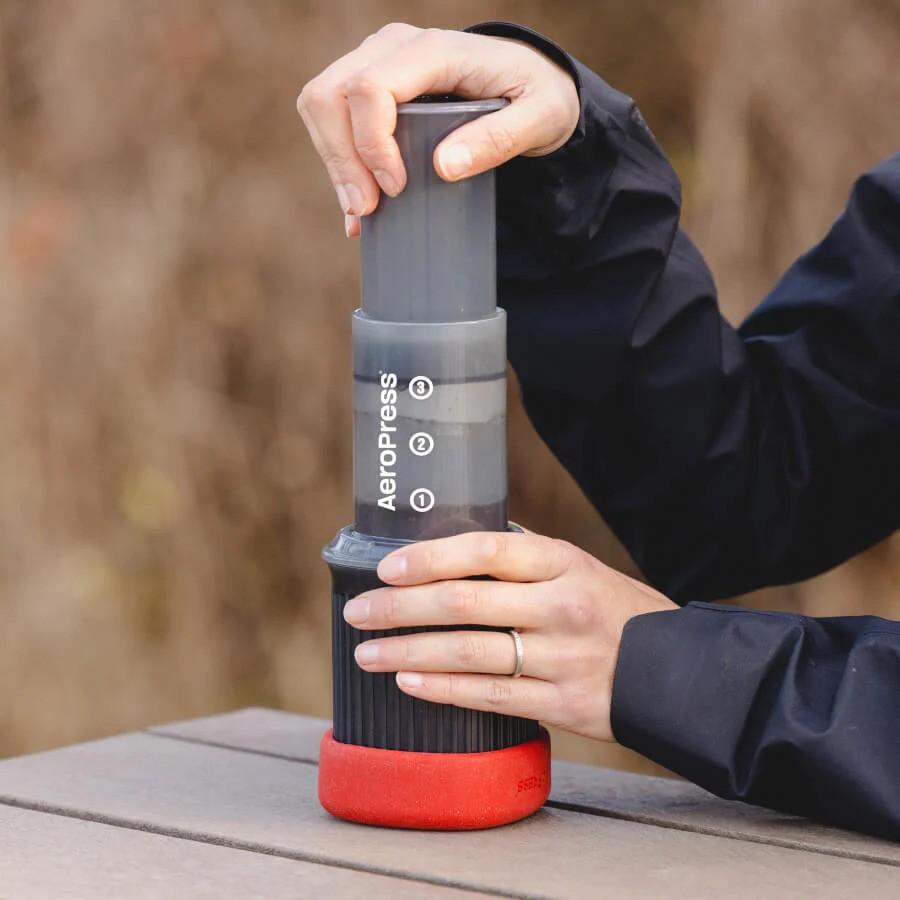Understanding how to make espresso is the first step in enjoying espresso-style beverages at home, like an Americano or a Latte. Brewing regular coffee in your drip coffee maker will suffice for a regular cup, but you’ll need a different method if you seek a rich, concentrated shot of espresso.
Unlike regular drip coffee, espresso extracts intense flavors from coffee beans, resulting in a strong-tasting coffee. The easiest way to make espresso is by using an espresso maker, which uses hot water and high pressure. However, this isn’t the only way to brew a great shot of espresso. Below, we’ll explore how to make espresso, both with and without an espresso maker.
How to make espresso with an espresso maker

- Select your coffee: Using a solid espresso-roast coffee or darker roast is ideal for making espresso. Dark roast coffee is usually used for making espresso because it is bolder and more robust in flavor.
- Grind your beans: Fine to medium-fine coffee grounds are used when making espresso. Here, you can choose to use either pre-ground coffee or grind your own beans using a coffee grinder.
- Dose your espresso shot: The amount of coffee grinds you’ll use depends on how many espresso shots you want to make. For a standard double shot (about 2 ounces), use between 13 and 18 grams of coffee. Using a digital coffee dosing cup can help make this process easier.
- Pull the shot: After adding your coffee grounds to the portafilter, press the button to pull the shot. This step may vary depending on whether you have an automatic or manual espresso maker; however, most at-home espresso makers today are automatic.
How to make espresso without an espresso maker

Using an automatic espresso maker is the easiest way to make espresso. However, you can use several other methods to brew espresso-style coffee without purchasing an espresso maker. Below are a few of our favorite methods.
AeroPress method
While not the same as authentic espresso (which has a layer of crema on top), the AeroPress method is a great way to make espresso-style coffee that is similar in flavor and boldness.
Thanks to its bold, concentrated flavor, coffee made using an AeroPress can still be used in drinks like cappuccinos and lattes. This method not only takes up less space than an espresso maker, but it’s also far more affordable. Here’s how to make espresso using an AeroPress:
- Heat water to the desired temperature (ideally 200 to 205°F). For precision, an electric kettle can be used.
- Grind about 3 TBSP of dark roast coffee (or measure about 18 grams) to a medium-fine grind using a coffee grinder.
- Place the circular basket into the AeroPress and lightly wet it until damp. Screw the basket onto the end of the AeroPress.
- Pour coffee grounds into AeroPress. Place it on top of an empty mug.
- Pour 85 grams of water (or pour to 1 and 1/2 mark), wait 45 seconds, and then insert the plunger into the top of the machine.
- Gently press down until the plunger reaches the bottom.
- Remove AeroPress, unscrew the basket, and empty the bucket. Press down on the plunger to remove the filter and grounds.
- Enjoy your espresso-style coffee.
Moka Pot method
If you have a Moka Pot, you can also use this coffee maker to make espresso. Using steam pressure to force hot water through ground coffee, the Moka Pot method yields intense, strong coffee without requiring an espresso maker. The method is fairly simple, too, requiring only the Moka Pot, coffee beans, and a coffee scale or tablespoon. Here’s how to make espresso using a Moka Pot:
- Measure out 20 to 22 grams of coffee or about 2 TBSP. Grind beans to a fine texture.
- Pour about 3.5 ounces into the bottom of the Moka Pot. Pour grounds into the filter and screw on the spouted top attachment.
- Place the pot on a burner and set to medium heat.
- Wait to hear a whistling sound, for coffee to expand, and for foam to be placed on the upper level of the pot.
- Enjoy your espresso-style coffee.
The French Press method
A French Press coffee maker can also brew a concentrated cup of coffee similar to espresso. Again, this method won’t create true “espresso,” but it is a good substitute for making strong coffee or espresso-style beverages. The final result is strong but not as strong as traditionally brewed espresso. Here’s how to use this method:
- Grind at least 2 TBSP of your favorite espresso-style coffee to a fine texture.
- Heat water to about 200 to 205°F. Add coffee grounds to your French Press.
- Bloom the coffee by adding a splash of hot water and allow the grounds to soak for about 30 seconds.
- Pour the rest of the water over the coffee grounds. Close the lid and allow to steep for about 4 minutes.
- Slowly and steadily press the plunger down halfway, then raise it to the top and plunge fully down.
- Pour your coffee into your mug and enjoy.




